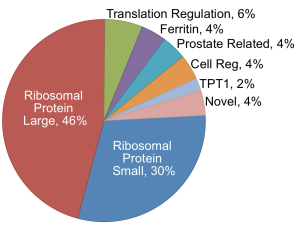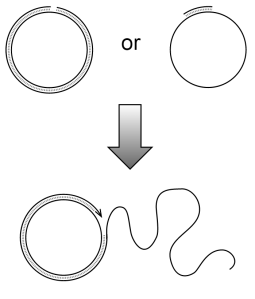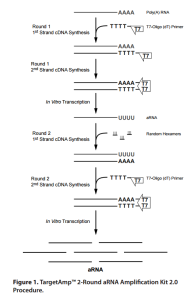RNASeq studies are hampered by the pervasive excess of reads mapping to ribosomal RNA (rRNA), notorious for greatly reducing the amount of useful mRNA sequencing data. Here we highlight the advantages and disadvantages of the various approaches have been developed to address this problem.

1) rRNA depletion with magnetic beads: Technologies such as Ribo-zero™, Ribominus™, and MICROBExpress™ seem to be based on similar technology that uses rRNA depletion probes in combination with magnetic beads to deplete rRNAs from a sample, thus achieving the goal of enriching the representation of mRNAs. Based on our interactions with end-users, Ribo-zero™ customers have been quite pleased with this technology, although some have found it a bit pricey. As a result, some scientists have adapted home-made protocols either using the Organism-Specific Probe Selection software or by designing probes empirically based on the reads they see in their samples. In both cases users custom order Biotin-TEG DNA oligonucleotides in combination with BioMag® Nuclease-Free Streptavidin Particles to complete their own protocols.
2) Poly(A) enrichment: Scientists working in eurkaryotes find that simply purifying poly(A) mRNA with BioMag® Oligo (dT)20 Particles is the most cost-effective approach. The BioMag® SelectaPure mRNA System is a complete low cost kit for isolating mRNA. Clearly users wishing to study histone mRNAs or those of prokaryotes will have to find another solution.
3) rRNA depletion by nuclease: Some of the most straightforward approaches for rRNA depletion involve simple digestion of rRNA with Terminator™ 5′-Phosphate Dependent Exonuclease. While a mature mRNA will carry an m7GTP cap on its 5′ end protecting it from the 5′-to-3′ exonuclease activity, rRNAs and tRNAs carrying only a 5′ phosphate will be degraded. A number of published reports have used this exonuclease approach which seems to be particularly interesting when users have complex environmental samples with multiple prokaryotic species. Alternative strategies involve the use of DNA probes complementary to the rRNA prior to digestion with RNAse H, which degrades only the RNA strand in an RNA:DNA hybrid. RNase-Free DNase I is then used to eliminate the DNA Probes. A report in Nature Methods (DOI:10.1038/nmeth.2483) comparing multiple approaches for RNASeq library prep determined that the Hybridase™ Thermostable RNase H-based approach was superior for low quality, degraded RNA samples.
4) aRNA amplification: Very common in microarray protocols such as those using Illumina BeadChip, the linear amplification of antisense RNA (aRNA) also called cRNA seems like an interesting approach. Kits like the TargetAmp™, TargetAmp™-Nano, and TargetAmp™-Pico aRNA Amplification Kits are designed to amplify the input poly(A) mRNA from very low input (down to 10pg) RNA samples such as those obtained by laser capture microdissected tissue or by flow sorting. After amplification, sufficient sample is present for microarray analyses of gene expression. Based on technology developed by James Eberwine for single cell analysis, the TargetAmp™ kits have been used in RNASeq protocols with very low quantity samples (For example see: Matsumura et al. and Li et al.).
5) Rolling Circle Amplification: Similar to the Eberwine-based methods, Rolling Circle amplification protocols involve first the reverse transcription of mRNA with the goal of amplifying the cDNA, primarily for single-cell applications (see Pan et al.). These protocols are quickly gaining popularity and make use of CircLigase to circularize full-length single-stranded cDNA or T4 DNA Ligase kits such as Fast-Link™ DNA Ligation Kits for double-stranded cDNA circularization. Use of Phi29 DNA polymerase is then possible, despite the fact that Phi29 normally requires templates of at least 3-4kb. While it is clear to see how reverse transcription using oligo(dT) will enrich mRNA reads relative to those mapping to tRNA and rRNA, such an enrichment would not be possible in prokaryotes. The rolling circle amplification protocol has been adapted to transcriptome analysis in single prokaryotic cells by making use of random hexamers combined with Terminator™ 5′-Phosphate Dependent Exonuclease described in #3 above (see Kang et al.). Interestingly, the protocol makes use of thiophosphate-linked RNA random hexamers to reduce the formation of primer-dimers and to protect against Phi29 DNA polymerase exonuclease activity.

Need help building your protocol for enrichment of mRNA reads? Contact the technical specialists at tebu-bio!
Legal notes: TargetAmp™ and Ribo-zero™ are trademarks of Epicentre-Illumina. Ribominus™ and MicrobeExpress™ are trademarks of Life technologies.




